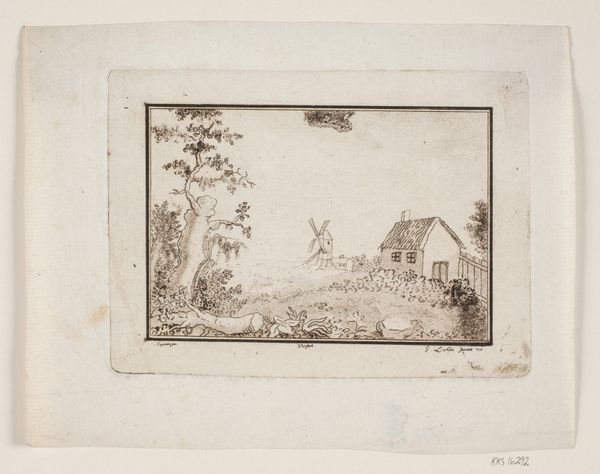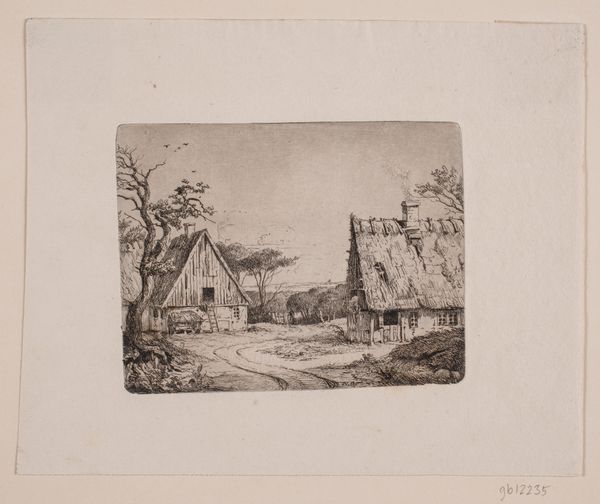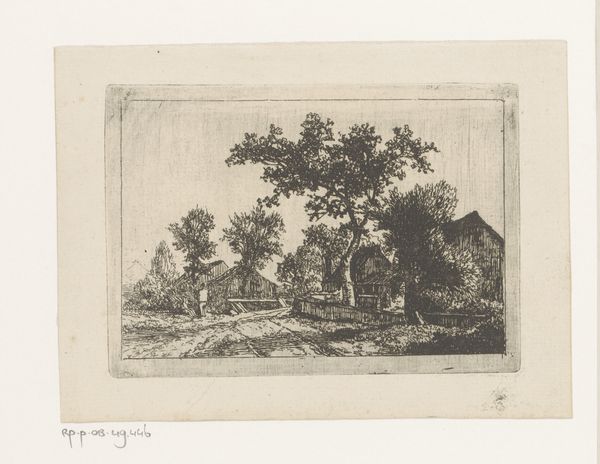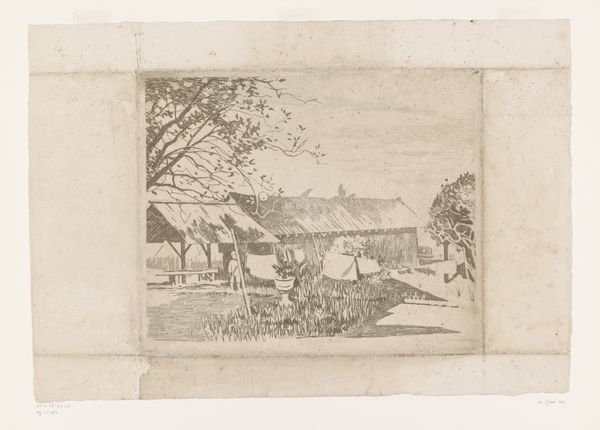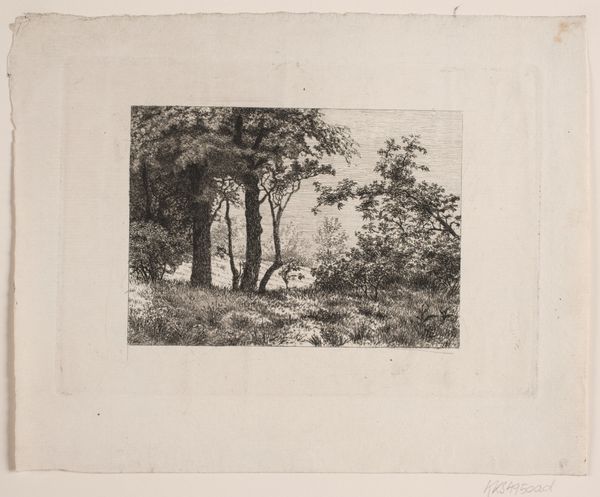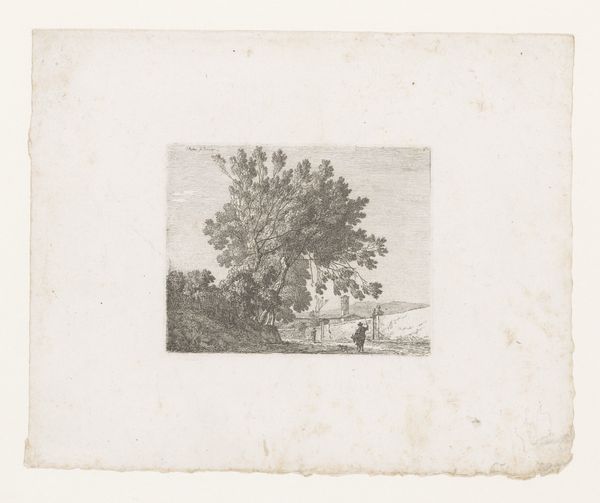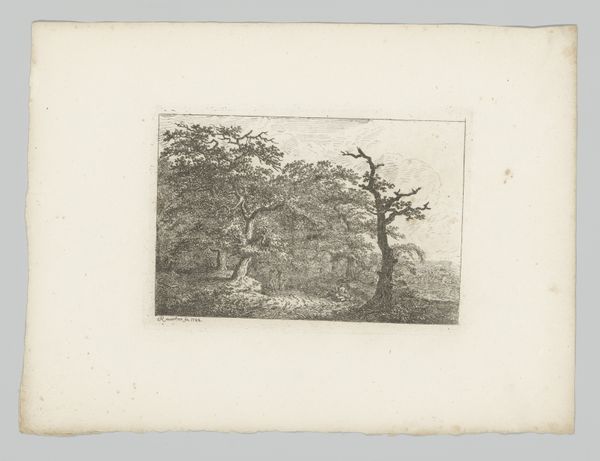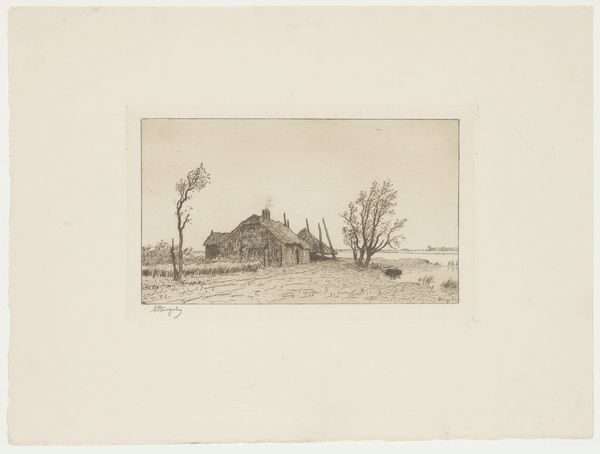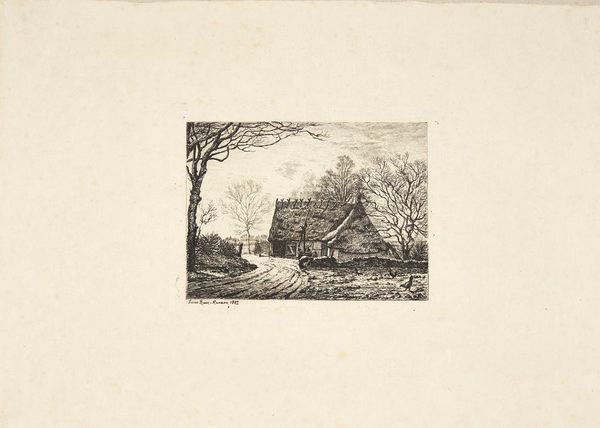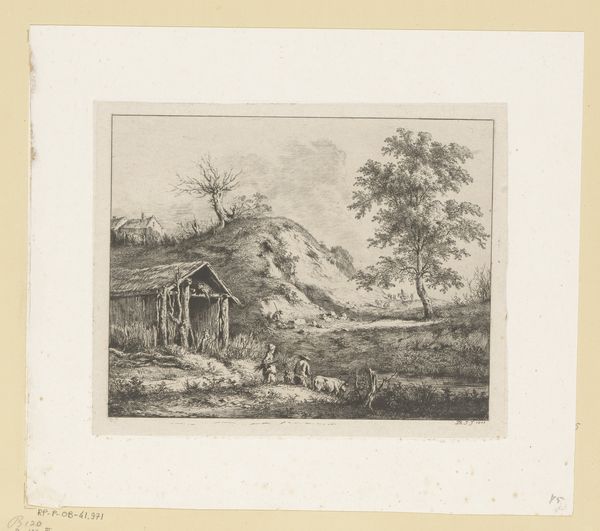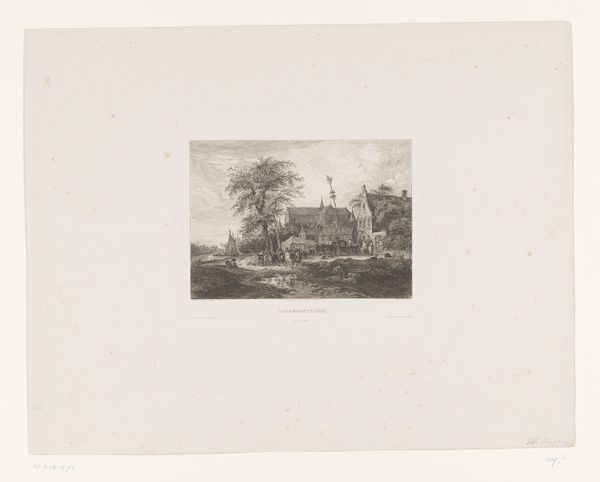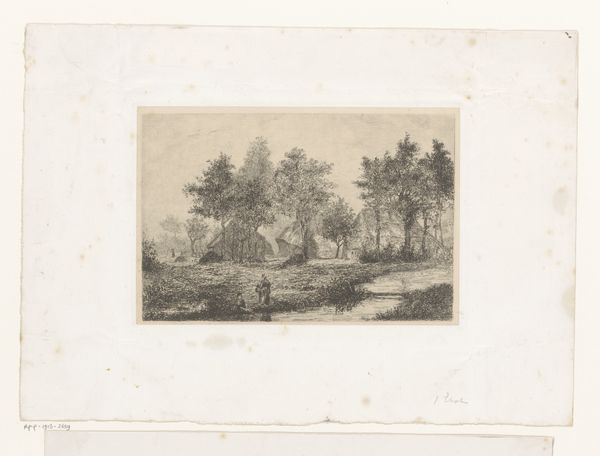
print, plein-air, engraving
#
neoclacissism
# print
#
plein-air
#
landscape
#
engraving
Dimensions: 102 mm (height) x 140 mm (width) (plademaal)
Gerhard Ludvig Lahde created this landscape with house and mill using etching, a printmaking technique, sometime between the late 18th and early 19th centuries. During this era, landscape art served not only as a picturesque scene but also as a reflection of cultural identity and societal values. This seemingly simple image of rural life invites us to consider the romanticized vision of the countryside during a period of significant social and economic change. The placement of the windmill and house within the landscape speaks to human presence and interaction with nature, but it does so through an idealized lens, obscuring the labor and class dynamics inherent in rural life. How does the artist's choice to depict this scene, absent of people, affect our understanding of the relationship between humanity and the environment? The quiet stillness evokes a sense of nostalgia, perhaps reflecting a longing for a simpler time amidst the backdrop of industrialization and urbanization. It reminds us to consider whose stories are told and whose are left out in the construction of national identity.
Comments
No comments
Be the first to comment and join the conversation on the ultimate creative platform.
